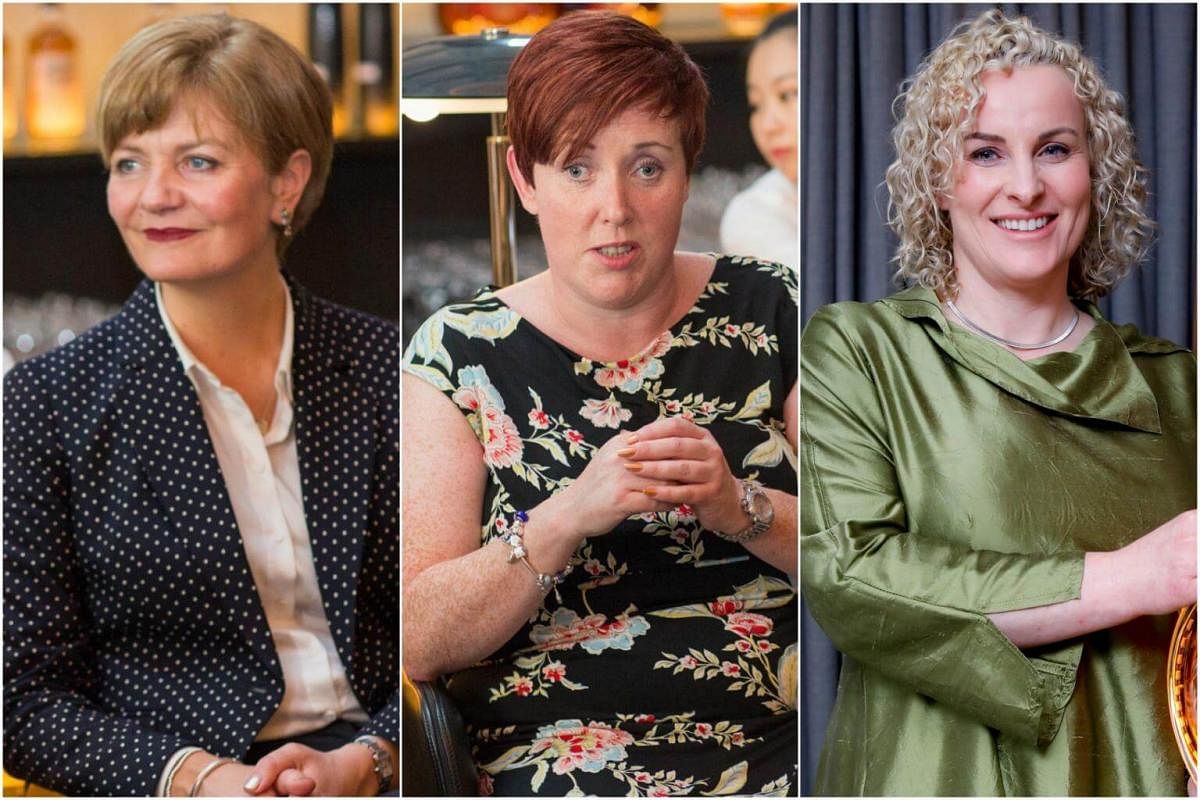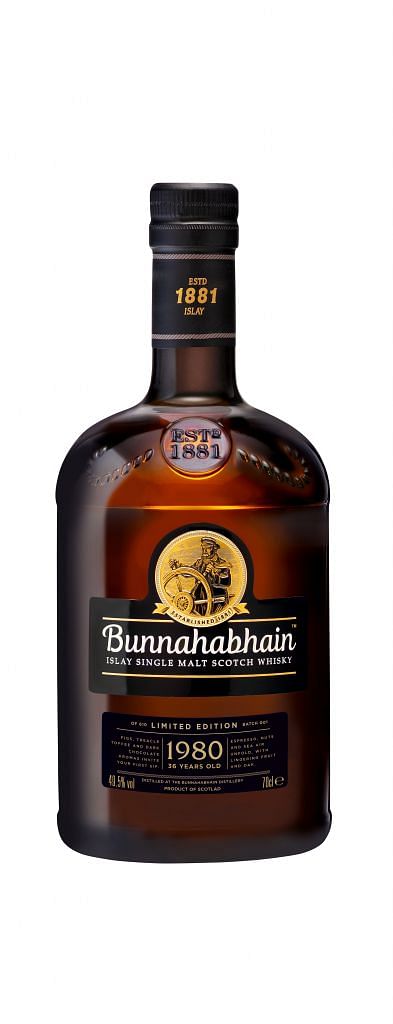Swig
3 women of the whisky world
A trio from Scotland unveils rare cellar releases and whiskies at the seventh edition of the DFS Masters of Wine and Spirits

The Scotch whisky industry has traditionally been thought of as an old boys' club, but more women are pushing through the doors and coming to the fore as it evolves with the times.
The Sunday Times speaks to three women who are at the top of their game in the whisky world - Ms Stephanie Macleod, master blender at John Dewar & Sons; Dr Kirstie McCallum, senior blender at Burn Stewart Distillers; and Ms Sarah Burgess, whisky maker at The Macallan.
The trio, who are from Scotland, were in Singapore last week for the seventh edition of the DFS Masters of Wine and Spirits, where they unveiled rare cellar releases as well as whiskies created exclusively for the event.
Held on March 24 and 25 at The Warehouse Hotel in Robertson Quay, the event saw a curated showcase of 120 exclusive wines, champagnes, whiskies and cognacs from some of the world's most prolific wine and spirits houses - many of which are DFS exclusives.
The curated collection is sold at the DFS Wines and Spirits Duplex duty-free stores in Changi Airport's Terminals 2 and 3, and will be available next month at T Galleria by DFS in Hong Kong and Macau.
Mindful of whisky trends
Stephanie Macleod, master blender and malt master at John Dewar & Sons
Ms Macleod is only the seventh person - and first woman - to become Dewar's master blender, a title she has held since 2006.
She developed the brand's current single-malt range, including Aultmore, Craigellachie, Royal Brackla, The Deveron, as well as the Aberfeldy 16 and 28.

While the Scotch whisky industry may be steeped in tradition and rules, she says that John Dewar & Sons is prepared to meet changing consumer demands.
"We're looking at the trends out there to see what flavours people are interested in."
For her, it is not just about catering to tastes - it is also about making it count. "If we can accommodate that within the Scotch whisky regulations, then that's great, but we don't want to be gimmicky," she says.
"We don't want to put something in a cask because it's going to get us some column inches or get talked about. It has to work with the whisky because people see through that."
She cited the example of when she had to create her first blended Scotch - Dewar's 15 Year Old - which was released in 2010 and initially aimed at the China market. She recalls being sent a consignment of bottled green tea as a suggestion for a mixer for the whisky.
While it eventually worked out, Ms Macleod says: "Sometimes, we have these considerations, but I also have to ensure the Dewar's house style is respected... Now Dewar's 15 is a global product and not just for the China market... it's doing well."
With finite stocks, master blenders sometimes have to get creative with blending.
"Part of being a master blender is knowing when to take (the spirit) out of the cask, when to leave it and perhaps when to finish it. But when something isn't of the right quality, I'll take it out and put it into another cask to energise it with a change of scene and put some colour in its cheeks," she says.
But in the case of the Aultmore 31 Year Old Exceptional Cask (Cask no. 1635, inset), which was drawn out from its reserves specially for the DFS Masters of Wine and Spirits, she says: "There's no hiding place with a single cask expression like that, as it came out of the cask, at natural cask strength and colour."
The Speyside single malt has been aged since 1986 in an Oloroso sherry cask filled with Aultmore spirit. It was selected by Ms Macleod, together with the DFS team, and she was especially drawn to its darker colour.
"It showed another aspect of the character of Aultmore, which is typically quite ethereal, light, herbal and pale. This expression shows the more exotic and spicy side of Aultmore," she says.
Only eight units, at $3,600 each, are available for sale.
Drink it however you want
Kirstie McCallum, 44, senior blender at Burn Stewart Distillers
There is no need to be precious about how whisky is consumed, says Dr McCallum, who has 18 years of experience in the whisky industry.
"There's not this thing anymore where you can drink whisky only with water or ice - you can do whatever you want with it ," she adds. "People are beginning to realise that whisky is very versatile and you can do so much with it."
Dr McCallum, who has a PhD in analytical chemistry, selects casks for use in Burn Stewart's core range of single malts - namely Bunnahabhain, Tobermory and Ledaig.

She started off as a blender for the distiller for five years and became a global brand ambassador for four years, a role which involved travelling, educating and meeting consumers.
"That was great because blenders often sit in a lab and mix whiskies, but it's good to get out to meet the consumer and find out what people want to drink. Then we can use that knowledge to make sure we put together a product that people enjoy," she says.
In fact, she feels that the whisky industry will "progress more into the cocktail sector".
"The next stage is people getting to be more accepting of using malt whiskies, especially in cocktails," she says.
For the DFS Masters of Wine and Spirits, she created the Bunnahabhain 1980 Canasta Finish (inset), which was matured in Oloroso sherry casks before spending "just under three months" in sweet Canasta sherry casks.
Twenty units are available at $3,200 each.
Dr McCallum says: "I thought the Canasta cream sherry could be a really nice match and sweeten up the 37-year-old whisky a little bit, especially since Oloroso can be a little tannic."
As for new whisky blends, she thinks there will be more experimentation. "Consumers are always looking to try new things, so we're going to have to continuously develop to fit changing palates."
However, she is not willing to compromise on the quality or the traditional rules surrounding the making of the Scotch.
"I wouldn't like to see things change too much because we are what we are, and we should be proud of our heritage," she says.
"Rules shouldn't hold us back and we should be able to develop and innovate, but still stick to our roots."
Adapt flavours to suit tastes
Sarah Burgess, 42, whisky maker at The Macallan
Whisky makers should learn from industries such as perfume and tobacco, says Ms Burgess, one of the key members of The Macallan's whisky mastery team.
"In those industries, they make modifications to their blends for the market that they are in... So why not have a core range of whisky, but you modify the flavours to suit each region?"
Referring to the kopi-c (black coffee with evaporated milk and sugar) she had in Singapore, she suggests: "You like sweet drinks here, so maybe you'll have a sweeter edge to whisky here."
She adds: "I'm constantly nosing whiskies that have beautiful flavours, like rich vanilla, spicy ginger, heavy dried fruit, chocolate, espresso... you can mix them to make them different for everywhere."
She feels that the whisky industry can do better to adapt to consumers' tastes.
"With whisky, we have our flavour and we expect everyone to fall into the flavour that we have, rather than looking into what we can do to become more appealing."
She has been in the whisky industry for slightly more than 20 years and has been in various positions, from working at the visitor centre to managing distilleries owned by the world's largest spirits producer, Diageo.
She joined The Macallan in April last year, where she focuses primarily on the delivery of all core range vattings (the blending of malt whiskys) and working on new innovations for the brand, one of which is The Macallan Black M Decanter - 2017 Release.
Housed in a black crystal decanter designed by renowned French crystal house Lalique and crafted from a small number of casks, the rare cellar release is made available for sale by a retailer for the first time - at DFS Wines and Spirits Duplex duty-free stores in Changi Airport's terminals 2 and 3.
Aimed at the top tier of the single malt whisky market, only 20 units are available at $9,500 each.
She says: "With Black M, you had to be able to identify it as being related to M (its predecessor), in terms of the dried fruit notes. But where you get the vanilla and freshness of M, we wanted to change that to bring a smoky edge in - rather than have light, fresh notes."
When she returns to Scotland, she will be laying down more Macallan 15 Year Old Fine Oak and a few of the 12 Year Old expressions.
As for challenging Macallan purists' tastes, she says that "10 to 20 years ago, they would've been upset".
"But because we've been successful with things like the Fine Oak range, the purists have seen something else - that balance of flavour."
Join ST's Telegram channel and get the latest breaking news delivered to you.
A version of this article appeared in the print edition of The Sunday Times on April 01, 2018, with the headline 3 women of the whisky world. Subscribe

